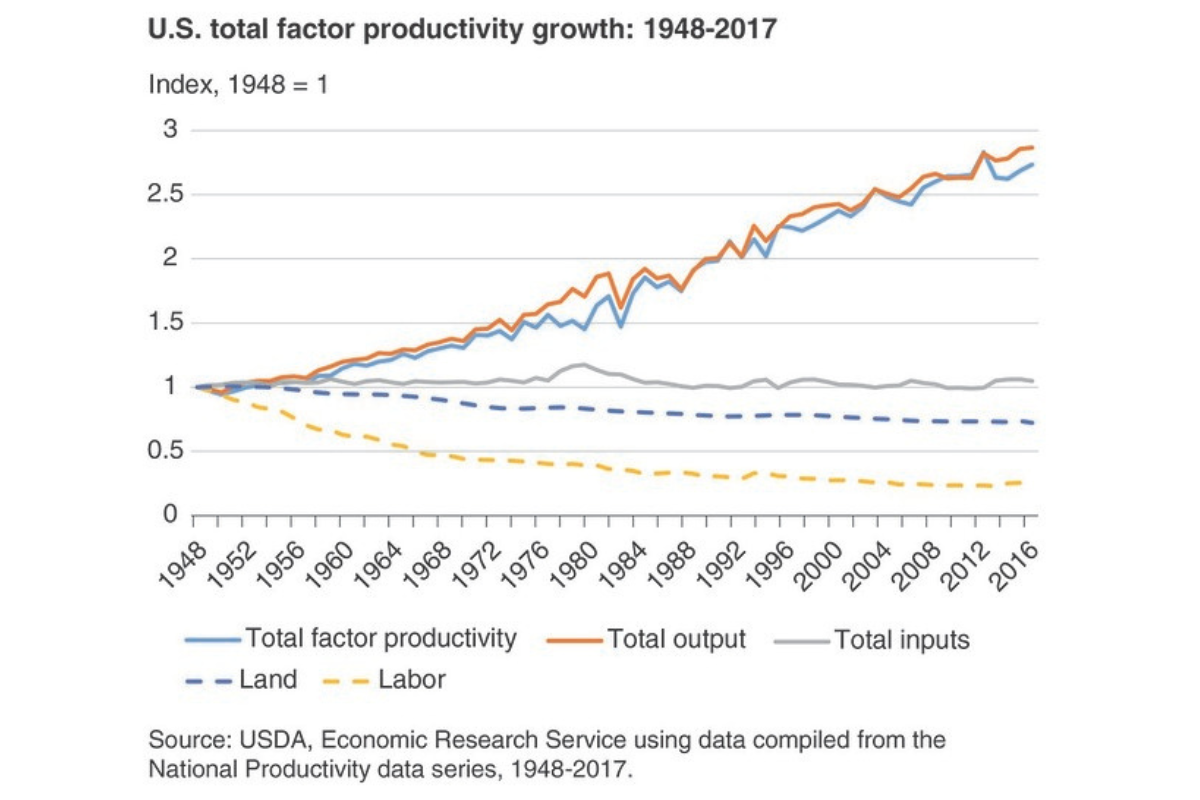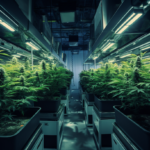The agriculture industry is evolving more rapidly than ever. According to the United States Department of Agriculture (USDA), U.S. farm production nearly tripled between 1948 and 2017. With that kind of growth, the importance of accurate forecasting cannot be overstated.

Forecasting is particularly significant in agriculture, helping reduce crop loss and improve efficiency, particularly in cannabis cultivation, where artificial intelligence (AI) holds immense value. AI-assisted forecasting is a critical tool for cultivation facilities, enabling them to anticipate and mitigate risks, optimize resource allocation, and ultimately enhance yields, quality, and profits.
Utilizing technologies enhanced with artificial intelligence to track plants and collect data allows cultivators to learn more about their crops as well as how various cultivars respond to environmental changes, irrigation strategies, and pathogens or stress that may occur.
AI reduces the need to rely on humans who may skew, forget to record, or fail to hand over data upon leaving the company. Tracking crop progress allows companies to be confident in the data obtained and retain it for access years later. In addition to monitoring crop progress and responses, AI enables cultivation companies to track employee progress and the implementation of standard operating procedures for quality and training purposes.
One popular advanced cultivation method where AI-assisted forecasting can be beneficial is crop steering, which combines irrigation practices and environmental controls to manipulate plants’ growth. The cultivator controls the dry-backs of the growing medium between daytime irrigation events and during the night to achieve an optimal volumetric water content and electrical conductivity (which indicates the strength of the nutrient solution) for the stage in the growth cycle. This irrigation strategy, combined with control of leaf vapor pressure deficit, allows cultivators to manipulate their plants’ growth to achieve optimized yields and quality.
Plants can be steered in two ways: vegetatively or generatively. These two conditions applied by crop-steering practitioners can help control and maximize plants’ growth. Either strategy may be used at any time, depending on the goal of growth manipulation. However, typically generative growth is used during the first few weeks of the flower cycle to control plant height, vegetative during the middle of the cycle to increase bud size, and generative at the end to increase cannabinoid and terpene production. AI can help identify how efficient the crop steering is. By monitoring data such as plant height, leaf surface temperatures, and the difference between air and leaf temperature, cultivators easily can see how plants respond to their inputs and make more informed decisions about how to steer them. By employing AI and the data it provides, cultivators can implement ideal practices, enabling increased efficiency and resource conservation while maximizing production and profit.
Unforeseen events like suboptimal environments, pests, diseases, or inadequate resource management can significantly impact cultivation businesses. However, with the proactive capabilities of AI, these threats can be anticipated and mitigated. Advanced AI algorithms can accurately predict potential risks by analyzing historical data, substrate conditions, environmental data, and other relevant factors. For instance, AI can detect the first signs of environmental issues like humidity spikes, prompting facilities to take immediate action. A proactive approach can help prevent fungal pathogens that can arise from humidity spikes, including botrytis and powdery mildew. The approach also can aid in pest detection, encouraging cultivators to increase their integrated pest management regimens upon the first sign of unwanted pests prior to infestations.
Helping cultivators understand which environmental factors or irrigation strategies work best for their crops or cultivars empowers growers to replicate these results, allowing them to maximize yields and quality as well as predict when issues may arise due to problems with irrigation or the environment. By quickly identifying pests, cultivators can save time with reduced scouting and act more quickly to prevent small issues from becoming major infestations.
Utilizing successful and failed growth-cycle documentation allows cultivators to repeat desired results in future growth cycles, contributing to maximized yields and quality. Efficiency is not merely a goal; it is a necessity in the competitive world of cultivation. Accurate forecasting is a powerful tool that equips cultivators with the ability to make informed decisions about environmental, irrigation, and fertigation practices. By optimizing these processes based on forecasted data, facilities can streamline operations, reduce resource wastage, and achieve higher quality and yields with lower production costs. AI-powered forecasting systems provide facilities with actionable insights, instilling a sense of control and confidence to optimize their operations.
In addition to optimizing crop-management practices, accurate forecasting has significant implications for other aspects of cultivation businesses. Forecasting can help in adjusting crop insurance, for example. Insurance providers rely on reliable data and risk-assessment models to determine premiums, coverage limits, and payout mechanisms. By integrating AI-driven forecasting technologies, insurers can better assess the likelihood of crop-loss events and calibrate their risk models accordingly
Forecasting also can aid in business planning by identifying how much product will be available for sale or to send to manufacturing. This data may enable business owners to understand how to scale or upgrade properly. In addition, AI-assisted forecasting can aid in identifying realistic business expectations, allowing cultivators to present investors with clear projections for growth-cycle outcomes, profits, and losses.
Forecasting is more than just a tool; Data Science Central called the practice a game-changer that can reduce crop loss, enhance efficiency, and maximize yields and profit. In the context of cannabis cultivation, where precision agriculture and AI technology rapidly are gaining traction, accurate forecasting holds immense potential not just for managing crops but also for revolutionizing crop-management practices. By harnessing the power of data-driven insights, facilities can navigate the complexities of cannabis cultivation with confidence, achieving sustainable growth and prosperity in a volatile environment.
As we continue to advance in technology and data analytics, forecasting in agriculture will become indispensable, driving innovation and resilience across the industry. This is only the start of what AI can do in the cultivation space.
The future of agriculture as a whole stands to benefit from the emergence and evolution of AI data analytics. Cultivators with long-term aspirations would do well to adopt AI-facilitated forecasting sooner rather than later.

Allison Zervopoulos is a senior plant scientist at Neatleaf. She possesses more than sixteen years of experience in the cannabis industry, with a specialized focus on cultivation. She excels at optimizing practices to maximize yields and ensure high quality. As a successful startup leader and strategic consultant, she brings a wealth of knowledge to cannabis ventures. She is driven by innovation, professionalism, and integrity and is dedicated to advancing the industry.











[…] can be hazardous places. Luckily, technologies like automation, the internet of things (IoT), and artificial intelligence (AI) are adding a new layer of workplace safety. How? Let’s get into […]